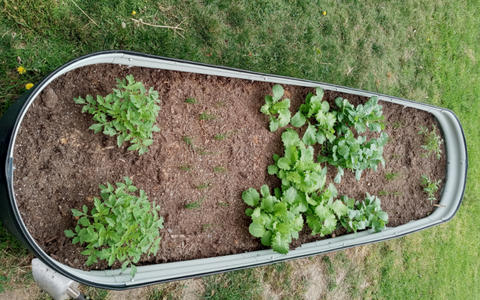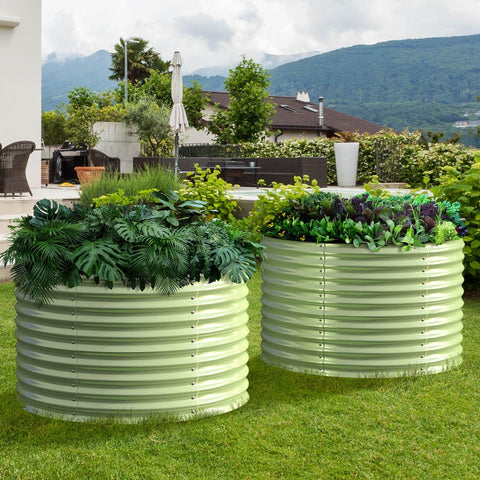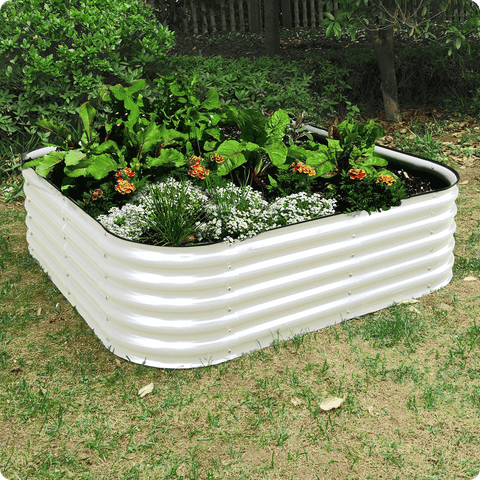Do You Need to Plough Under The Raised Garden Bed?
In most cases, you do not need to cultivate soil under raised garden beds. However, you may need to prepare the ground by pulling weeds and removing rocks. In the process, you may eventually excavate the soil, depending on the preparation method and the current condition of the soil.
Prepare floor for raised garden bed
Although you can build a raised garden bed on most types of surfaces, including concrete and a table top, if you build a bed on the ground, you must take some additional steps.
This is because if the ground is properly prepared, the roots of plants will have additional growth space, which is good for deep rooted crops. They will also be able to obtain nutrients underground, rather than relying solely on soil additives.
You can prepare the floor for the raised garden bed in many ways. However, the two most common methods of land preparation are trenchless and low tillage.

The following is a more in-depth review of each approach.
Trenchless
The no digging method is exactly what it sounds like - a method of preparing land without digging or farming. This is a labor-saving method, which is good for your back, but it requires that the soil is conducive to plant growth. If this is the case, the main problem you may face is that grass and weeds prevent you from building bulges.
Here is how to prepare the area for the bed:
- Cut or trim weeds and grass as much as possible.
- If there is grass in this area, please cover it with organic fertilizer and lime.
- Cover the area with organic shading materials. Generally speaking, newspapers do well. Make sure to overlap the newspaper to prevent weeds or grass from slipping out of the cracks.
- Newspapers (or other shading materials) will suffocate grass and weeds. The material should be organic, so that it will also decompose over time. If you do not have a newspaper, consider using cardboard.
- Add a layer of compost as the growth medium. This should be very thick, about 4-6 inches (10.16-15.24 cm).
You can now start building bulges on the compost. When the root is long enough to reach the ground, the shading material will decompose and the compost will become part of the ground soil
Low tillage
Low tillage methods include soil excavation and some tillage. This method is used when the soil is not very conducive to plant growth, such as when the soil is highly compacted or full of rocks and stones.
For this method, you should:
- Mowing or cutting grass and weeds.
- Completely dig out grass and weeds.
- Dig out the top layer of soil to remove grass and weed seeds that may affect the protrusion. This also makes it easier to see which rocks and rocks are blocking the soil.
- Save the top layer.
- Remove the stones and stones you find. If there are obvious plant debris (such as big tree stumps), they should also be removed.
- Loosen the soil slightly with a shovel. Don't dig too much - you won't plow the soil as thoroughly as traditional gardening.
- Add compost organics to the soil. You can use manure, compost, or a mixture of both.
- Place the top layer on the new organic layer and gently mix the two.
Although this method does require a small amount of tillage, its strength on the ground is far lower than that of mechanical methods such as rotary machines. Unlike traditional farming methods, you do not have to repeat the process every year. As long as the soil is not compacted, the initial low tillage will last for several years (or a lifetime if you are lucky) without repetition.

Why is farming bad
Most people who offer advice on building raised garden beds or even traditional underground gardens would advise against farming unless there is no other option.
This is because, although farming has long been regarded as the best way to lay the foundation for agriculture and horticulture, there is growing evidence that farming is harmful to the soil and the environment.
The following are specific reasons why farming is not recommended:
- Contrary to popular belief, tillage destroys the soil structure and actually increases the risk of soil compaction rather than aerating the soil.
- Damage to the soil structure also makes the soil more loose and vulnerable to erosion. If you live in an area with heavy rain and strong wind, the problem will be aggravated.
- In some cases, tillage can expose dormant weed seeds to ideal growth conditions, promoting more weed growth rather than destroying it.
- Farming destroys organic matter in the soil, including microorganisms. Although the soil fertility increases in the short term, it will be destroyed by the loss of microorganisms in the long run.
Farming is also labour intensive, even if you have a rotary cultivator. For people with mobility problems and back problems, this is an inconvenient and often painful choice. Unless there is no other choice, it is better to avoid disturbing the soil.
In other words, light tillage is required in some cases. For example, when the soil is too compact and requires light, or when there are many rocks that hinder the effective growth of plants. Ultimately, whether you need to cultivate depends on the condition of the soil you are using.

You do not need to cultivate the ground under the raised garden bed, unless there are debris and rocks that will hinder the growth of plant roots.
Unless there is no suitable alternative, farming should be avoided in all types of horticulture, as there is ample evidence that in the long run, farming increases soil erosion and has a negative impact on soil quality and fertility.
